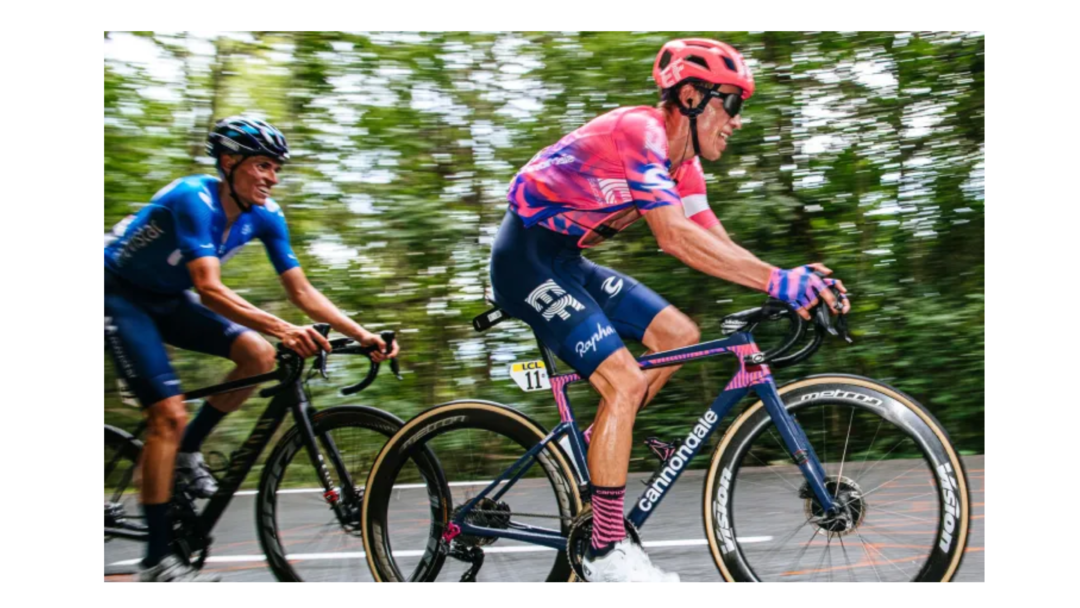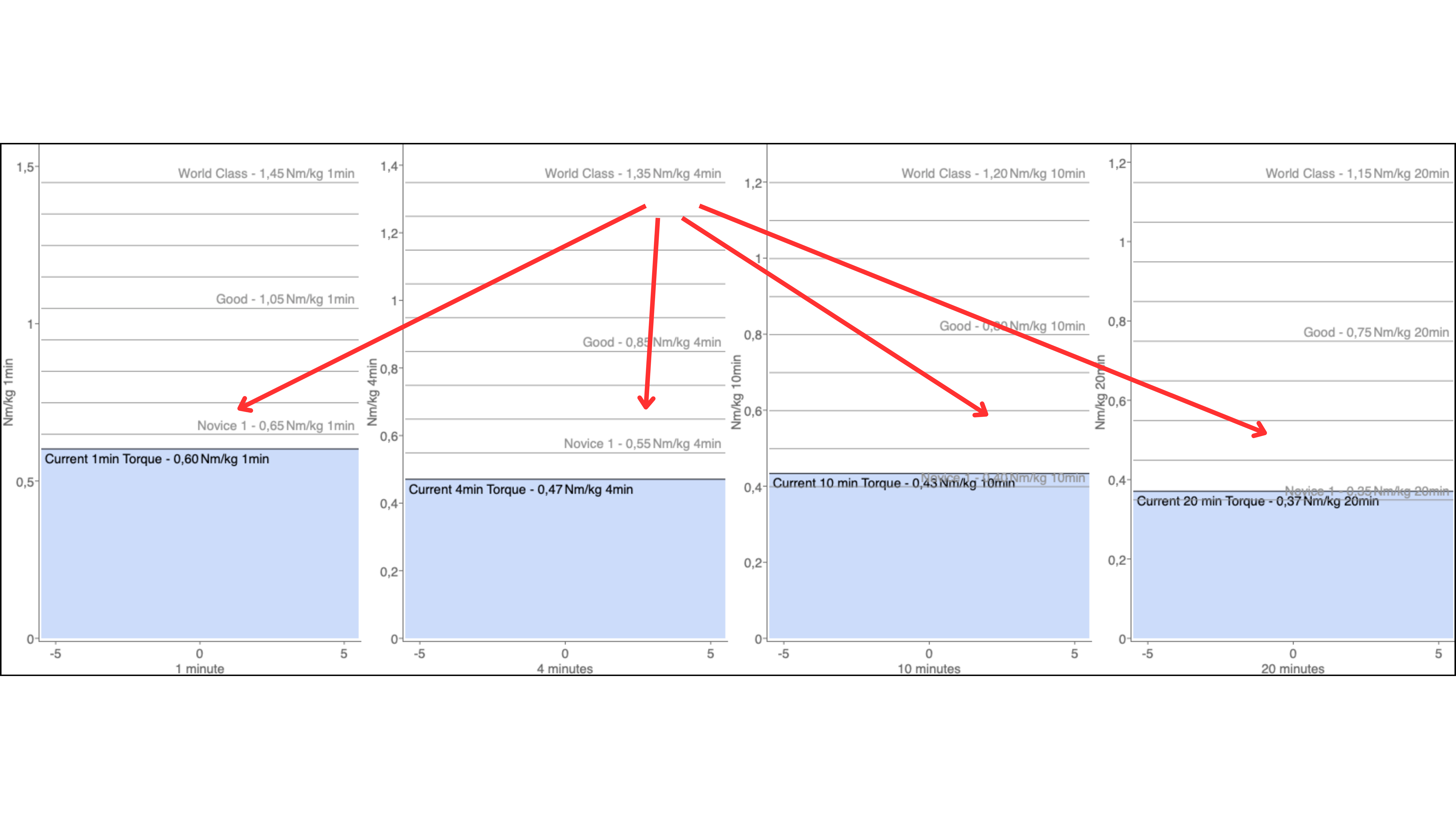TORQUE – Cycling
Torque in cycling. We will explain in depth what it is used for, what its objective is, how it is measured, how it is monitored and what benefits it has.

¿What is?
Torque in cycling refers to the force the cyclist applies to the pedals.
It is measured in Nm (Newton/meters).
¿What is the target?
Torque in cycling training aims to recruit a greater number of muscle fibers, especially larger ones (type II), with a reduced metabolic cost. This type of neuromuscular training seeks to improve neuromotor synchronization to apply force at specific cadence levels.
Working at a low cadence is key to recruiting larger motor units and muscle fibers. The main focus of torque training is to teach the body to recruit these fibers efficiently, thus improving pedaling and overall efficiency on the bike.
The product of torque x cadence = power and more torque = more power.
¿Weakness?
As we have said, we measure it in N/m.
Using WKO5, we observe the values obtained in any individual, compare them with the values of world tour cyclists and categorize whether it is a weak point and they need to work on it.
In order to categorize it and compare it with other individuals in equal conditions, we need to evaluate these values and measure them in Nm/kg.
Then, just as we do with FTP, we will evaluate it in various time intervals and thus we will be able to obtain a torque profile and assess whether it is a weak point or not.
In this case, as you can see, the torque values obtained in this individual are relatively low, so a specific torque improvement block would be recommended.
Remember, torque x cadence = power. That means more torque = more power.
¿Torque in cycling analysis by WKO5?
Using WKO we will analyse the absolute values of each individual, with a torque curve, very similar to the power curve that we are so used to using.
If we are analysing a cyclist for the first time, we will study his maximum values in recent years.
In this curve we will set the objectives/Nm that each individual must work towards in different time frames. In the example below we observe the maximum values in 4 min, in the last 90 days.
 torque max wko5 [/caption]
torque max wko5 [/caption]
To work and train with these values, we must configure our cycle computer with the Nm and Nm/kg displays.
How to work?
We are going to explain an example of periodization and how to work on it.
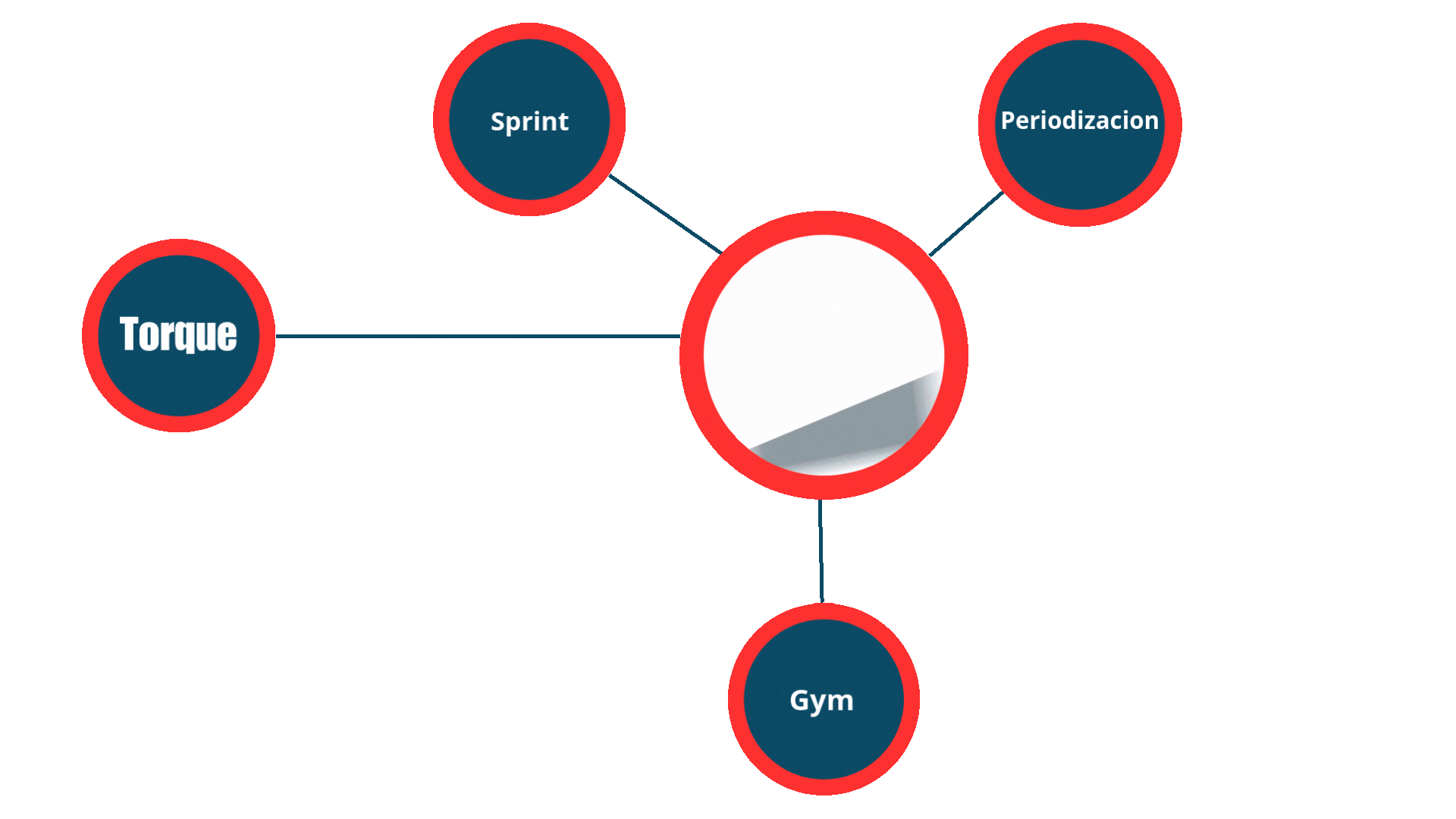
- Sprints at a very low cadence, stuck. A very common job in torque is to start at a very low cadence, trying to produce a high power, that is, we will start practically from a standstill and we will pedal about 8/10 times at a very low cadence and high torque.
- Uphill torque work. In this case, one of the most common on the bike is uphill torque work. It consists of climbing a hill at a low cadence in the Nm ranges established for torque improvement. (Hence the importance of being able to see the values of Nm, Nm/Kg, cadence, etc. on our cycle computer.
- Gym. Although it is very difficult to simulate a workout requiring so much specific force at a given time as in torque work in the gym, it is important to note that we will strengthen the entire area and, taking advantage of the synergies that the gym generates with torque work, we will achieve greater improvements and less risk of injury.
Periodization.
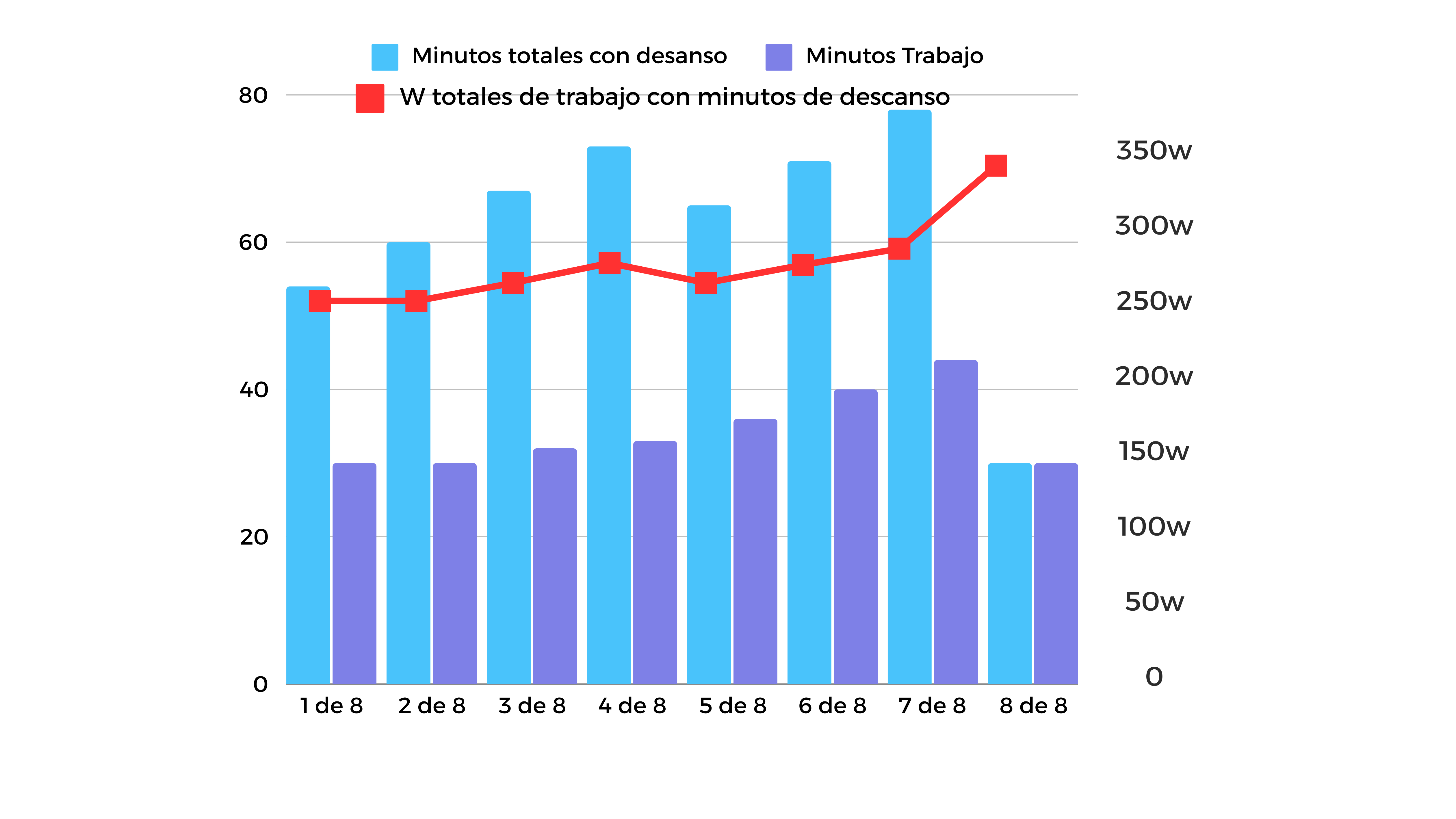
Let’s give an example of periodization in torque work.
- Set a goal: We set a goal and/or torque value (Nm) in WKO, associated with the individual with whom we are going to work to improve torque work.
- Set duration: According to the availability of our individual, we outline the weekly work and also establish the duration of the torque work.
- Set types of exercise: We establish types of exercises in the gym and on the bike.
- Analysis and monitoring: We carry out an analysis and monitoring using WKO, to see the improvements and adaptations.
As an example, you can see the work for 8 weeks, in which we start working the torque series for 4′ in which we try to increase the intensity and/or duration within the series work. A classic example is; 3×3′ / 3×4′ / 3×5′ or similar. In a high level cyclist and during a programmed work, it is even possible to work long series of 20-30min.
Monitoring.
For this purpose we will use WKO5 and monitor the improvement work, without compromising other areas, for example, FTP.
We observe how we have achieved an increase in torque in 4min.
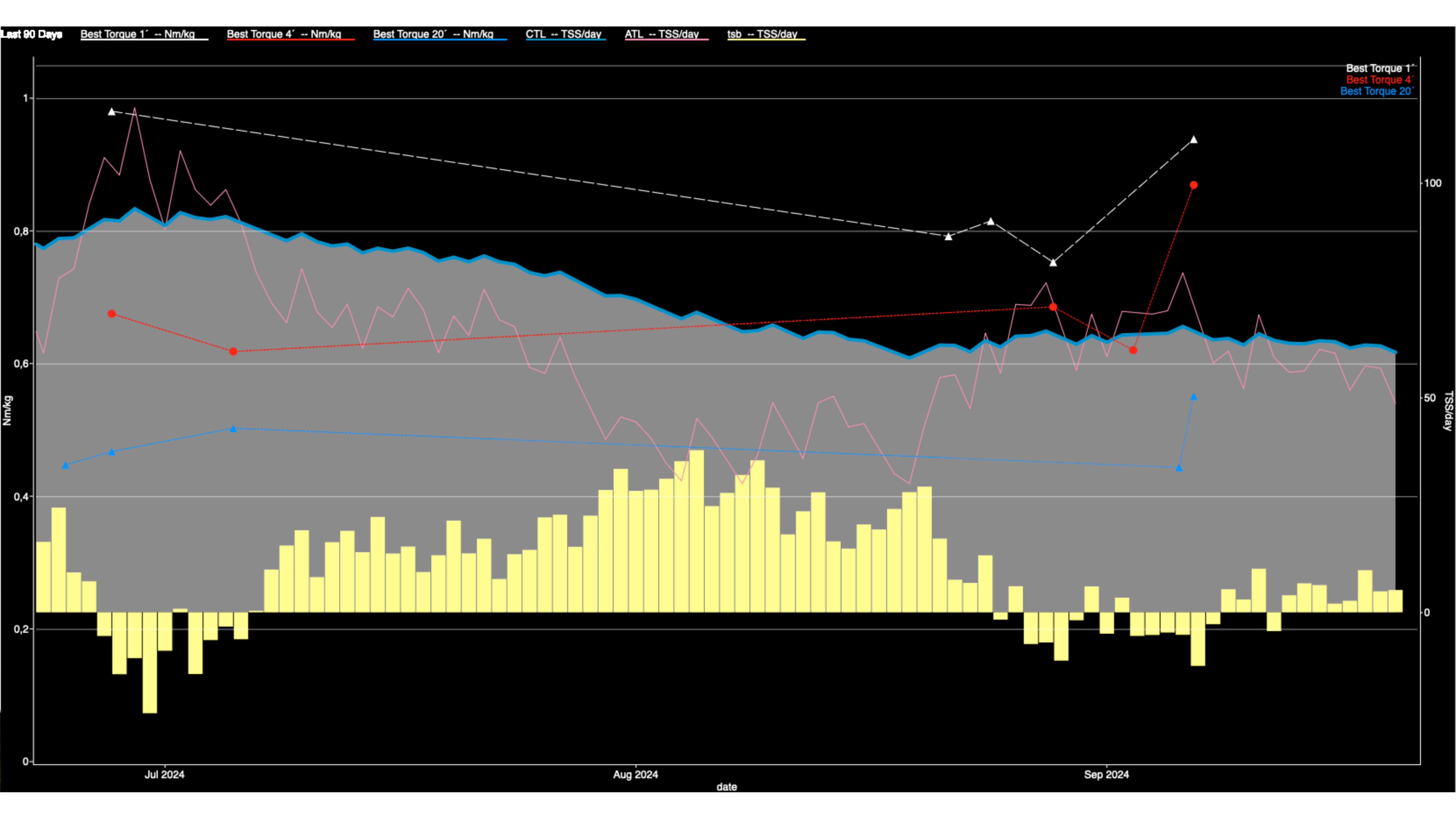
WKO torque curve, by Javi Sola. Where we see the improvement compared to 2022 and 2023.
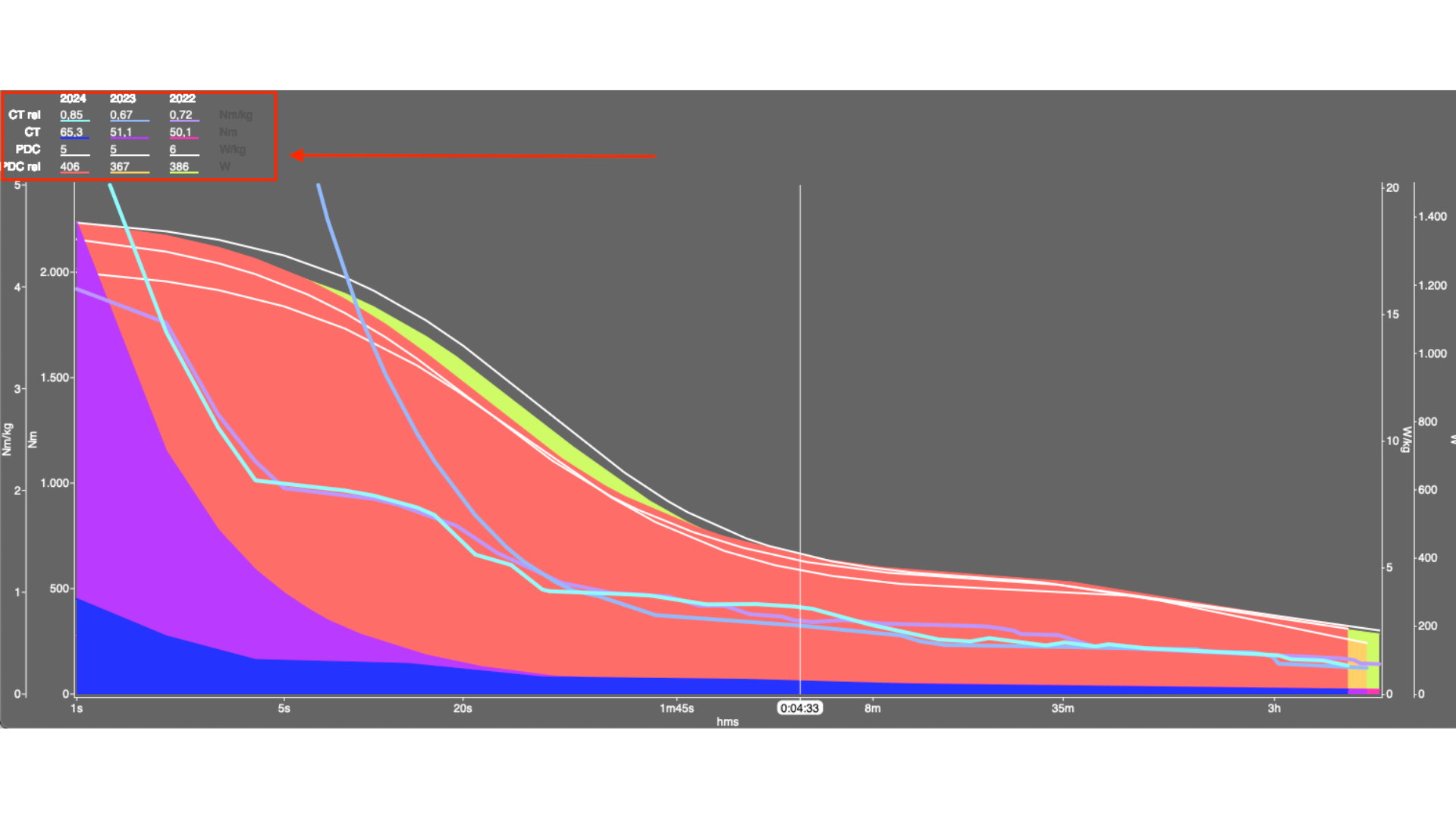
Benefit.
What do we gain?
- Muscularly:
- Muscle mass and glycogen improvement.
- Improves power production.
- Improves resistance to fatigue. If we raise the maximum torque level, we will be working at a lower level than the maximum, that is, if before our engine worked at 85%, raising this threshold, we will be able to reduce the % of work. An easy-to-understand example. If our current torque level in 4′ is 0.4 Nm/kg and we are working pedaling at 50%, if we are able to raise this limit to 0.8 Nm/kg we will be working at 25%. This will improve long-term performance and better resistance to fatigue.
- Neuronal:
- Brain – legs conection.
- Technique:
- Improves and/or prevents heel striking on the bike.
Torque training is highly recommended for any cyclist.
There is no scientific evidence that has been able to measure it to date, but there is no doubt about it. It improves the application of torque/force on the pedals and this helps us improve our resistance to fatigue.
If you need to work on this or other aspects, do not hesitate to contact me.
